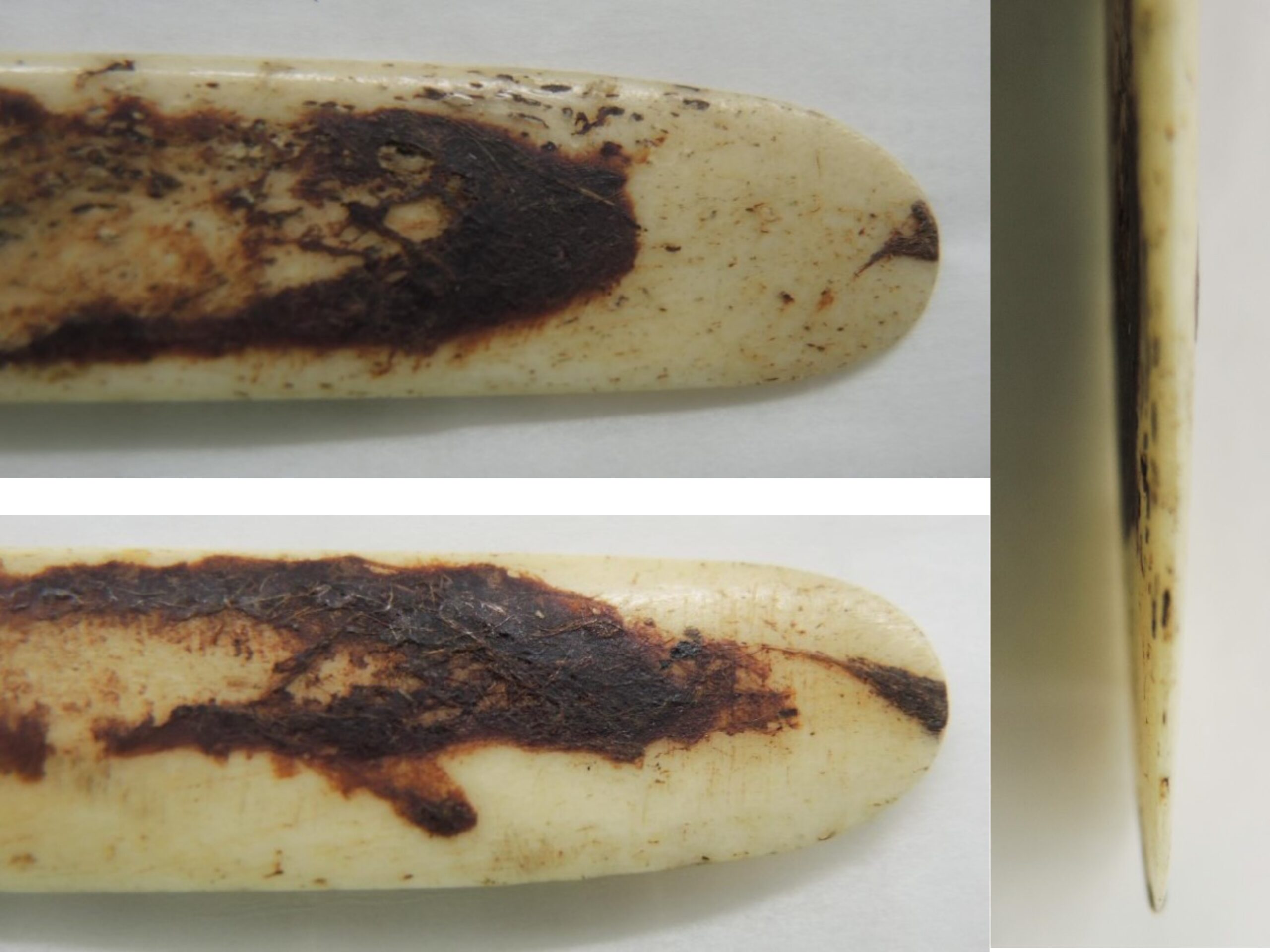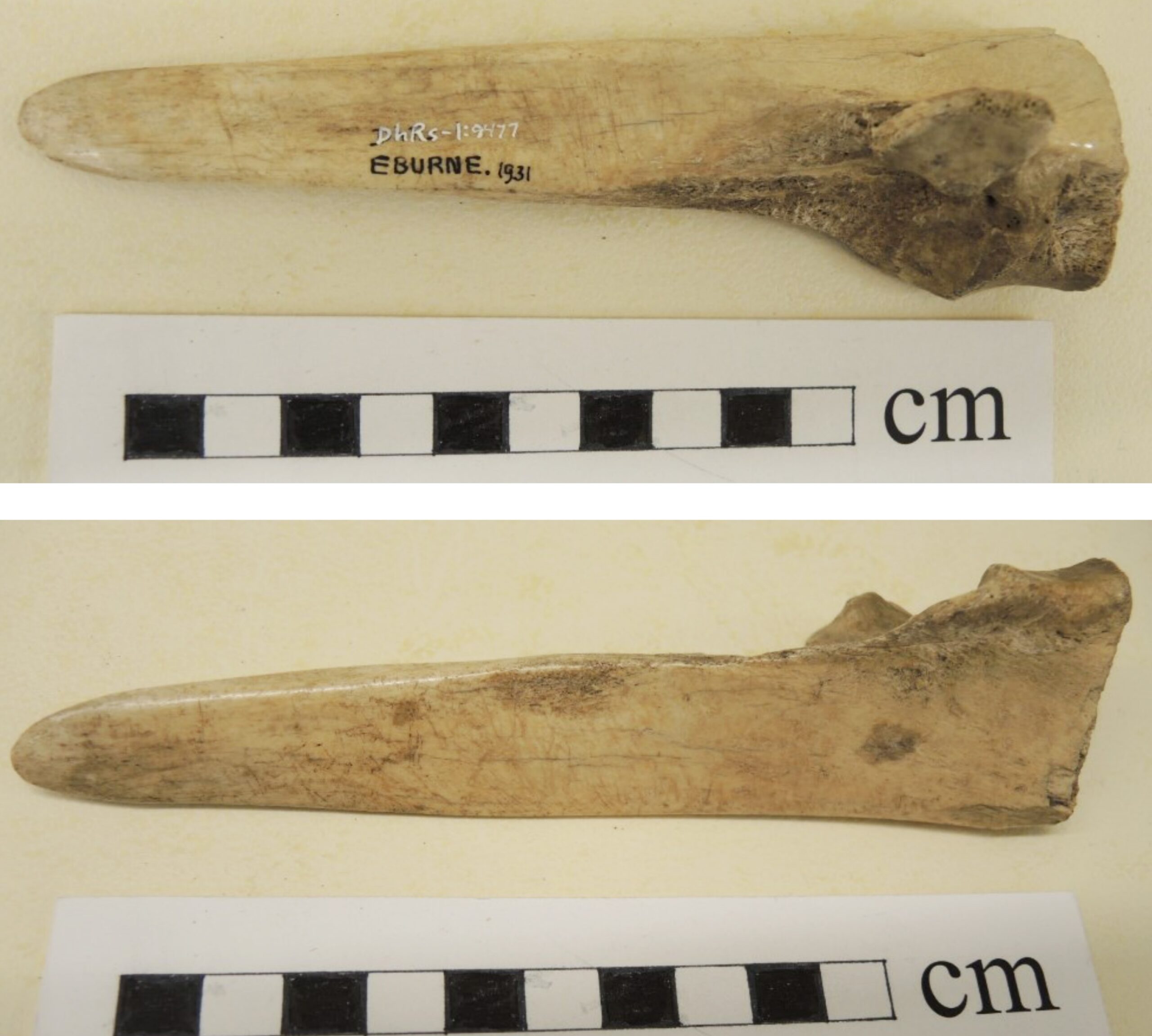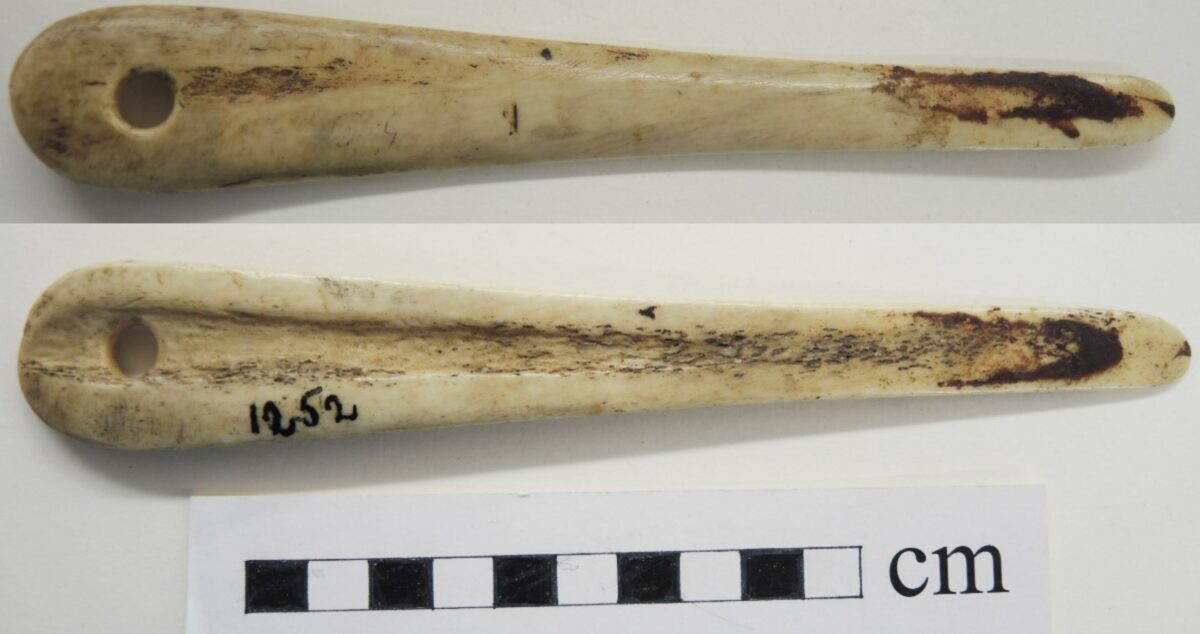Introduction
Many of the artifacts recovered by archaeologists have no ethnographic counterpart in museum collections. Most Indigenous ethnographic artifacts are made of wood. Rarer examples of bone or antler artifacts in ethnographic collections, with documentation, become important to help identify the use of some archaeological artifacts.
The Bone Tool
One unique artifact, in the Indigenous collections of the Royal B.C. Museum, is a bone tool described as a hat makers’ knife. The example was collected by Kwakwaka’wakw, George Hunt, in 1899, and sold to Charles Newcombe in 1901. Its ethnic origin is identified as Nahwitti, Kwakwaka’wakw.
This artifact, number RBCM1252 (old #19074), was listed in the original catalogue by Charles Newcombe as: “Bone knife (Kwetani). Of the mountain goat. Used in basket and hat making for adjusting of the strands; also, for splitting cedar bark”. It is 13.4cm long by 2cm wide.

In historic examples of cedar bark splitting tools, the flattened distal end of a deer ulna bone was most commonly used. From my own experiments, this latter tool does a good job of splitting cedar strips into thinner layers with its very thin but not sharp edge (Keddie 2012). The shape of this “hat making” tool with a thin, flat, rounded edged distal point, would serve to adjust spruce root strands in weaving without accidentally cutting or splitting them.
The Distinct Features
A distinct feature of this artifact is its highly polished working end. Figure 2, shows both sides of the working tip and the thin tip with a rounded edge. We need to keep in mind that almost all bone tools found in Indigenous ethnographic collections are made with iron tools, especially iron and steel files in later times. How different these may be from older examples made with stone tools, such as abrading stones and stone scrapers, is unknown. No matter how a bone tool is made, its use on plant fibres usually results in a highly polished distal end. An archaeological bone tool with a similar highly polished and rounded edge in shown in Figure 3. It is most likely that it was used for working plant fibres. This is an example of an Elk ulna bone tool from the RBCM archaeology collection (DhRs-1:9477).


Reference
Keddie, Grant. 2012. Ulna Bone Tools. The Midden, Journal of the Archaeological Society. 44(3/4).
